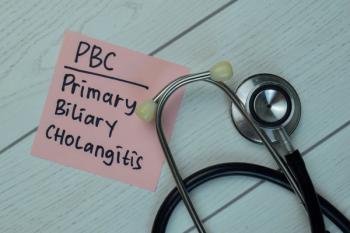
Severe Pediatric Asthma Symptoms Can Improve Through Multi-Disciplinary Programs
Pediatric severe asthma is a heterogeneous disease and based on data, a multi-disciplinary approach can improve the diagnosis and management of these children.
Serious exacerbations or symptoms in children with severe asthma decreased after being seen in a multi-disciplinary setting where symptoms were controlled and monitored.
According to research published in Pediatric Pulmonology earlier this year, children with severe asthma have substantial morbidity and healthcare utilization. Pediatric severe asthma is a heterogeneous disease, and based off data collected by the researchers, a multi-disciplinary approach can improve the diagnosis and management of these children.
To better understand and care for pediatric patients with difficult‐to‐treat and severe asthma, researchers of the study created a multi-disciplinary Severe Asthma Clinic (SAC) at UPMC Children's Hospital of Pittsburgh and reviewed the electronic health records of young asthma patients who were seen at the children’s hospital between August 2012 and October 2019.
The cohort study was conducted through an allergist and a pediatric pulmonologist who referred the young asthma patients. Outcomes of interest for the patients were that they had to have at least one pediatric intensive care unit (PICU) admission for asthma, they had the lowest pre‐bronchodilator FEV1 (the amount of air you can force from your lungs in one second) measured at the SAC and had several severe asthma exacerbations.
Researchers looked at some of the disparities that exist in terms of disease severity and control and identified potential risk factors for more severe disease. Factors such as age, sex, race/ethnicity, and body mass index percentile were looked at. Patient’s bronchodilator response (BDR) was also recorded from an evaluation 15 minutes after the administration of 2 puffs (180mcg) of albuterol (salbutamol). For each patient, researchers additionally recorded the lowest FEV1 percent predicted (FEV1pp) before and after bronchodilator administration, their BDR and their fractional exhaled nitric oxide (FeNO).
Of the 110 patients from the study, 59 were male (54%), 51 were female (46%) and the average age of patients at their first SAC visit was 10-years-old. Fifty-four patients in the study (49%) were White, 53 (48%) were Black/African American, and 3 (3%) were of other races/ethnicities. It was also found 52 (47%) patients were overweight or obese and 17 (15.6%) were born at or earlier than 36 weeks gestational age (including five born at or less than 32 weeks). In addition, 84% of patients were prescribed high‐dose ICS/LABA (asthma medication) and 36% were on biologics.
Further data shared 45 pediatric patients (41%) had more than one PICU admission for asthma. Twelve children required non-invasive ventilatory support (four required CPAP and eight required BiPAP), five were intubated and required mechanical ventilation, and one was placed on ECMO during an asthma exacerbation. Compared to patients without PICU admissions, those who required more than one PICU admission were more likely to be non-white (64.4% vs. 41.6%), had higher chances of allergic rhinitis or eczema, were likely to have lower pre‐bronchodilator FEV1 and have elevated FeNO.
Outside some of these outcomes the pediatric patients experienced, the most common comorbidities were food allergies (27%), gastroesophageal reflux disease (GERD, 15.5%), vocal cord dysfunction (VCD, 12.7%), anxiety (19%), depression (9%), attention deficit hyperactivity disorder (ADHD, 8%), and obstructive sleep apnea (OSA, 7%).
However, the most significant data collected was that severe exacerbations decreased from about 3 per year to roughly 2 a year following enrollment in the SAC. Compared to the year before joining the SAC, in the following year the group had 106 fewer severe exacerbations.
While the study supplies supported data, there were limitations. Authors claim the study was a retrospective chart review, and thus, were limited by the type and completion of data available from patient EHR’s. Secondly, the sample size is relatively small, which limited their ability to analyze certain subgroups and led to somewhat imprecise estimates, particularly in the fully saturated regression model. However, results were consistent in the unadjusted and the two adjusted models.
Erick Forno, MD, MPH, co-author of the study and assistant professor of pediatrics at the University of Pittsburgh School of Medicine and the UPMC Children's Hospital of Pittsburgh claims pediatric literature on severe asthma is unfortunately scarce. Through this study, readers can now understand the baseline characteristics, evaluations and management of severe and difficult-to-treat asthma in children.
“Our findings reinforced the importance of a multidisciplinary program for this vulnerable population of youth with severe asthma,” Forno said.
At UPMC, they now have a psychologist who meets with these families and they are adding a dedicated outpatient nurse coordinator to improve asthma care between clinic visits for these children, he added.
Newsletter
Get the latest industry news, event updates, and more from Managed healthcare Executive.

















































